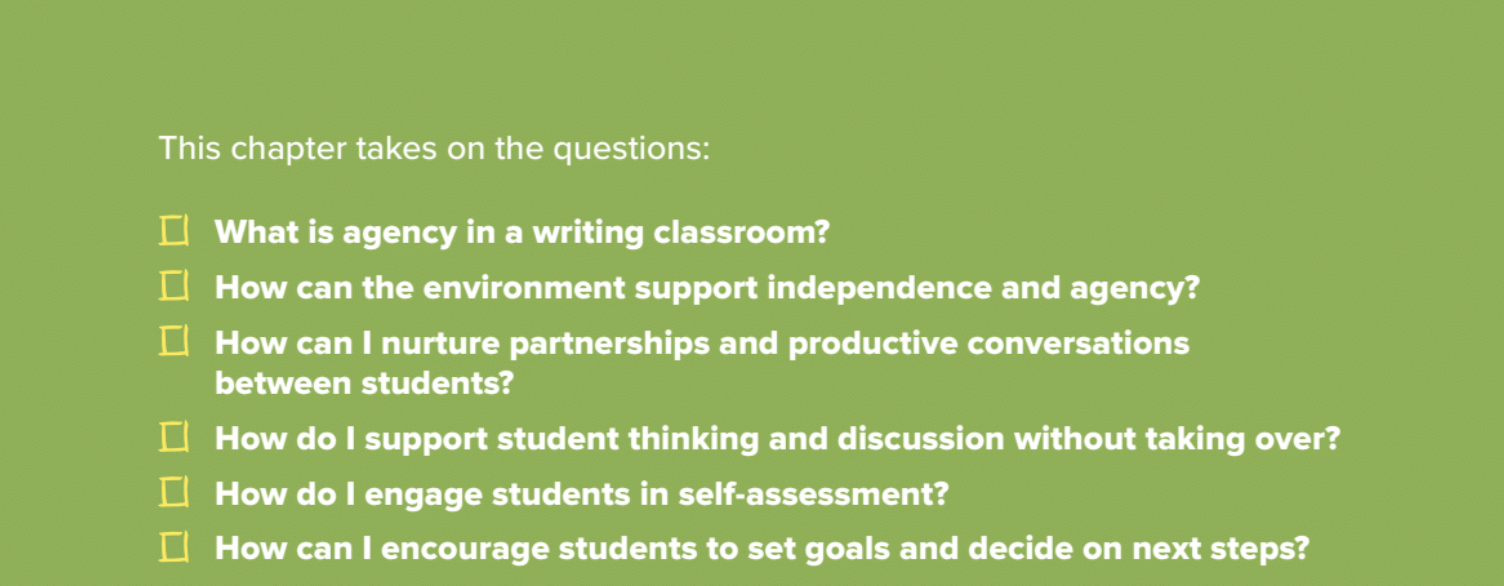Sneak Peek #5: Bringing It All Together to Develop Student Agency
Over the last several weeks, I’ve followed the lead of Christina Nosek, the author of Answers to Your Biggest Questions About Teaching Elementary Reading. Christina shared sneak peeks into her book, and you can read those on her website as well as mine below!
Sneak Peek #1: The first chapter is about ways to build writers’ identities, so this first post has several ideas for helping writers get to know themselves.
Sneak Peek #2: Since the second chapter delves into curriculum, this post has ideas about how to set up units and think about what student writers need to know and be able to do in order to express themselves with precision and clarity.
Sneak Peek #3: Instruction is key! Chapter 3 and this sneak peek are all about instruction formats and how you can get the most out of the minutes you have with students.
Sneak Peek #4: Assessment is also a key component of learning, especially when assessment is for students as opposed to of students. My hope is that this chapter and peek into broadens how you think about it!
This is my fifth and final sneak peek of Answers to Your Biggest Questions About Teaching Elementary Writing, and the focus of both Chapter 5 and this post is on student agency. You can check out the questions the chapter addresses below:
As I write this post, it’s almost the end of May, an important time to think about what students will remember and think about in future writing endeavors. That being said, I’d encourage teachers to consider the questions below throughout the year. Because I am always striving to teach the writer as opposed to have a single writing piece be the best it can be, my hope is that students internalize and understand their own identities as writers— their strengths, challenges, resources, and reasons— so that they will continue to want to express themselves long after I’m sitting beside them.
Choice matters to writers, and I think about choice across all aspects of a writer’s life. What are the various choices writers can make for themselves? Do they recognize those choices? Do they have a decision-making process they can access in order to be as productive as possible? Choice encompasses much more than topic and genre, and my hope is that the chart below will expand how you think about the options writers have and the teachable moments that exist to guide students along the pathway of becoming impactful writers.
Chapter Five contains many resources for guiding students toward self-assessment and goal-setting. Maybe one of the easiest resources to use in the chapter is the self-assessment form. You can tweak it for any level and genre and invite students to fill it out, inviting them to celebrate their learning and think about next steps.
And that concludes the five post Sneak Peek Series for the five chapters of Answers to Your Biggest Questions About Teaching Elementary Writing. I hope that you have found resources and ideas to inspire your writing instruction and to empower students to use language with intention, precision, and joy.
I love working with teachers and anyone else who is passionate about teaching students to write! I’m available for virtual or on-site professional development during the summer and during the school year. Feel free to reach out to meehanmelanie@gmail.com with questions and ideas.


